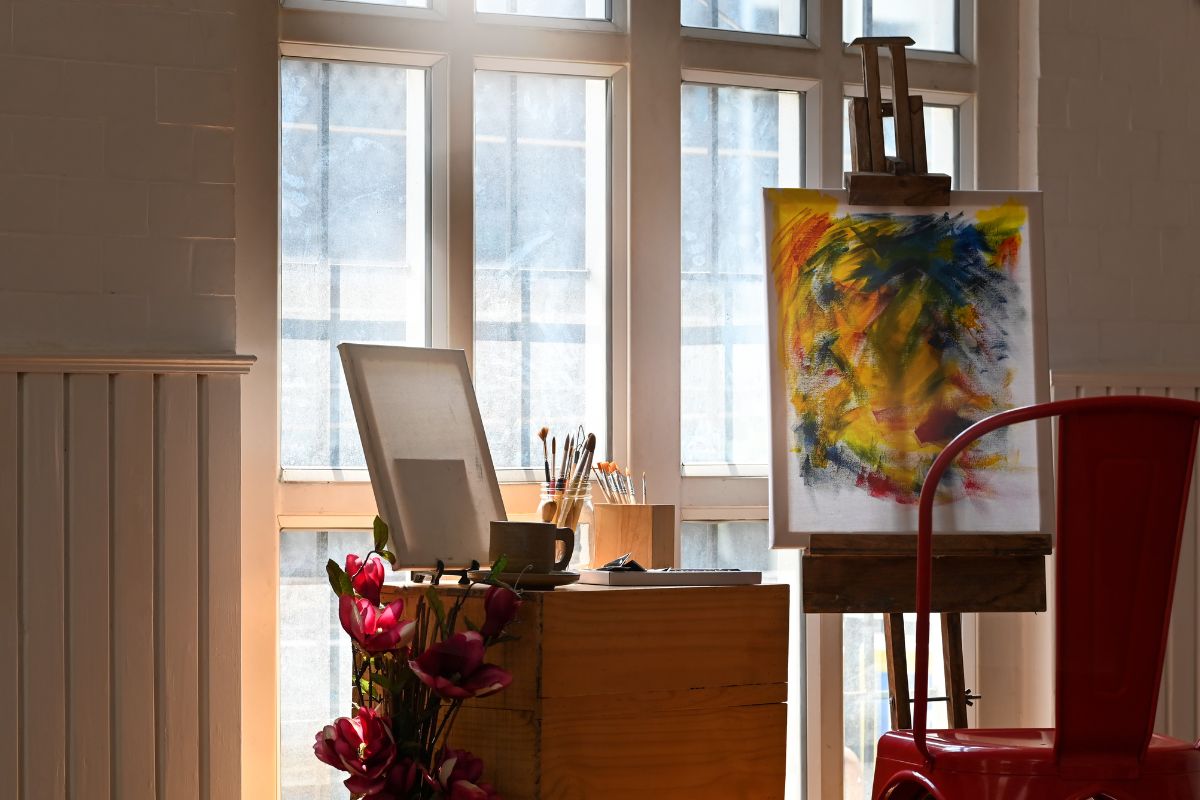Want some stylish and contemporary addition at the back side of your homes? A garden room extension can be a versatile option for your property that offers the extra living space and you can also enjoy the scenic beauty without the need for a full scale home extension.
So, if you are willing to create a home office, an entertainment area or a tranquil retreat, a garden room extension is a practical solution for all your needs that blends the functionality with the aesthetic appeal.
Through this guide, you will be able to explore everything that you might need to know while going for a garden room extension, from planning permission to design ideas, cost and much more.
What is a Garden Room Extension?
To go further, it is essential to know about the what exactly is the garden room extension. A garden room extension is a detached or a semi detached structure built in your garden, designed to serve as a functional extension.
In contrast to the other traditional extensions, garden rooms are usually self-contained spaces that will leave the minimal impact on the existing design of your building. You can use this room for the various purposes such as a contemporary gym, a studio, guest room or a hobby space.
These types of extensions are modern in designs and also pay a crucial role when it comes to the functionality. The garden rooms often feature the large windows, bi-fold doors and sustainable materials. In its construction, the professionals usually use timber frames, insulated walls and waterproof finishes to ensure the safety as well as the usability all the year around.
Do You Need Planning Permission to Build a Garden Room Extension?
While going for the project construction, what first came into the mind is “does garden room extension need planning permission in the UK?” In many cases, garden room extension fall under permitted development rights in the UK, what it mean is that you planning permission is not required if certain conditions are met:
- Height Restrictions: The structure must not exceed 2.5 metres in height if it is within 2 metres of the property boundary.
- Size Limitations: It must cover less than 50% of your garden’s total area.
- Usage: The room must not be used as a permanent living space.
Exceptions may apply for listed buildings, conservation areas, or designs that exceed these limitations. It is always recommended to consult your local planning authority.
Pros and Cons of Building a Garden Room Extension
Unlock the potential of your outdoor space with a garden room extension—an elegant way to expand your living area without compromising your backyard’s charm.
Before diving into this exciting venture, consider the pros and cons to ensure it’s the perfect fit for your lifestyle and property.
Pros
- Increased Living Space:
Provides an additional area for work, leisure, or hobbies without altering your home’s layout. - Flexibility:
Can be tailored for different purposes such as a gym, home office, or studio. - Enhanced Property Value:
A stylish garden room can increase your home’s market appeal and value. - Faster Installation:
Typically quicker and less disruptive to build compared to traditional home extensions. - Energy Efficiency:
Modern materials provide excellent insulation, reducing energy costs.
Cons
- Initial Cost:
High-quality materials and finishes can be expensive. - Space Limitation:
May not be suitable for smaller gardens with limited available space. - Usage Restrictions:
Often not intended for permanent residential use without additional permissions.
Difference between a garden room extension, orangery, and a Conservatory
Are you not sure whether a garden room, orangery, or conservatory is right for your home? Here we come with a solution to guide you. Well, these options can seem similar at first, but each one works in a different way.
If you are looking to create extra space that suits your lifestyle and is bank-friendly, it helps to know what sets them apart. Because the difference really matters, let’s break it down in the simplest way:
Garden room extension
A garden room feels just like part of your home. It’s fully insulated, has solid walls and a proper roof, and can be used comfortably all year round. If you want a home office, gym, or chill-out space, this option gives you flexibility and warmth, just like any other room inside your house.
Orangery
An orangery is a stylish in-between. It usually has a mix of brickwork, a flat roof with lanterns, and large windows. It’s brighter than a garden room but more solid and private than a conservatory. A perfect choice if you want something elegant, light-filled, and usable in every season.
Conservatory
A conservatory is mostly made of glass, including the roof. It’s the lightest and often the cheapest option. You’ll get a lot of sunshine and great garden views, but without proper glazing or blinds, it can be too hot in summer and chilly in winter.
Process of Building a Garden Room Extension
Imagine stepping into your own private sanctuary, seamlessly blending luxury with nature. A garden room extension offers the perfect balance of style and utility, turning your outdoor space into a haven for relaxation, creativity, or entertainment—what you should consider in the building process of a garden room extension are:
- Planning and Design: Decide the purpose of the garden room and collaborate with architects or designers to create a suitable plan that complements your garden and meets your needs.
- Securing Permissions: Confirm if the project qualifies under permitted development rights or requires planning permission from your local council.
- Site Preparation: Clear the area and lay a suitable foundation such as concrete or screw piles to ensure structural stability.
- Construction: Build the frame using durable materials like timber or steel. Add insulated walls and weatherproof roofing to make it suitable for year-round use. Install windows, bi-fold doors, and heating systems as required.
- Internal Finishing: Complete the interior with flooring, lighting, and furniture, customising it to suit its intended purpose
- Landscaping: Enhance the integration of the garden room with the surrounding garden by adding decking, pathways, or greenery.
Alternatives to Garden Room Extensions
Here, you will discover creative and cost-effective alternatives that can transform your home, maximise functionality, and enhance your outdoor lifestyle—without breaking the bank or sacrificing your garden’s charm. If building a garden room is not practical, consider these alternatives:
- Loft Conversions:
Transform your attic into a functional living area. - Garage Conversions:
Repurpose your garage into a studio, office, or guest room. - Pergolas or Gazebos:
Ideal for creating shaded outdoor spaces for seasonal enjoyment.
Design Ideas for Your Garden Room Extension
You’re dreaming of a tranquil home office, a cosy entertainment hub, or a serene wellness studio; the possibilities are as limitless as your imagination!
Here are some of the innovative ideas:
Home Office Haven:
Incorporate a desk, ergonomic chair, and soundproofing for a distraction-free workspace. Consider adding built-in shelving for storage, strong Wi-Fi connectivity, and plenty of plug sockets for your devices. A well-lit, quiet environment helps boost productivity and makes working from home feel effortless.

Artist’s Studio:
Add large windows or skylights to flood the room with natural light, fostering creativity. Install storage for art supplies, durable flooring for messier projects, and neutral wall colours to avoid distractions. It’s a perfect space to focus, reflect, and let your ideas flow freely.

Entertainment Space:
Equip the room with a minibar, comfortable seating, and a sound system for social gatherings. You can also include a wall-mounted screen or projector for movie nights, LED mood lighting, and smart controls to create the ultimate hangout spot right in your garden.
Wellness Retreat:
Create a calm space with yoga mats, gym equipment, or a sauna for relaxation. Use soft lighting, natural materials, and plants to enhance tranquility. Add a Bluetooth speaker for meditative music or guided workouts; it’s your private sanctuary for mental and physical wellbeing.
Guest Accommodation:
Include a sofa bed, compact kitchenette, and en-suite bathroom for overnight visitors. You can also add blackout blinds, good insulation, and ambient lighting for comfort. This self-contained setup ensures guests enjoy privacy, making it a functional and welcoming extension of your home without any compromise.
Comparison of Garden Room Extension Over a Traditional Extension
Who is wondering whether to go for a garden room extension or stick with a traditional house extension? Let’s break it down simply so you can choose what’s right for your home and budget.
Speed and disruption
Garden room extensions are usually faster to build and cause far less disruption to your daily life. Most can be completed in 2-4 weeks, while traditional extension can take 2-4 months or more, often with major internal work and noise.
Planning permission
In most cases, a garden room can be built under permitted development rights, especially if it’s under 2.5m high and used for non-sleeping purposes. Traditional extensions often require planning approval and more complex compliance with building regulations.
Cost differences
Garden room extensions generally cost between £15000 and £30000, depending on size and spec. Traditional single-storey extensions can cost anywhere from £30000 to £60000+. So, if you are seeking “which is most cost-effective?” The garden room often wins for budget-conscious homeowners.
Functionality and flexibility
While a traditional extension seamlessly connects to your home and may increase resale value more significantly, garden rooms offer a dedicated, detached space, perfect for a home office , gym or creative studio with a sense of privacy.
Aesthetic appeal
Modern garden room designs are stylish, sleek, and blend well into outdoor spaces. You can choose from timber cladding, aluminium frames, skylights, and more, bringing a contemporary feel without affecting your main home’s structure.
Checklist of helpful garden room extension
Before you dive any further for your garden room extension project, you must make a checklist that will help you plan smarter, save money, and avoid delays. Getting the essentials right can make a huge difference:
- Know the purpose
- Check planning rules early.
- Set a realistic budget
- Choose quality material
- Factor in utilities
- Think about year-round use.
- Get the right professionals.
- Keep design in harmony
- Check building regulations
Costs of a Garden Room Extension
A garden room extension in the UK can cost anywhere from £10,000 to over £50,000, depending on its size, design, and features. A basic garden room with minimal insulation and finishes starts around £10,000–£15,000, while a mid-range option with better insulation, double-glazed windows, and bespoke details, costs approximately £15,000–£30,000.
High-end garden rooms, offering luxury features like underfloor heating, premium finishes, and full utility integration, can exceed £30,000. Additional expenses like foundation work (£1,000–£5,000) and utilities (£1,500–£5,000) may also apply. While costs can vary, a garden room extension is a valuable investment, providing both functional space and enhanced property appeal.
Factors influencing the cost of a garden room extension
Why do garden room extension costs vary so much? Well, it all comes down to a few important details that can quickly shift your budget up or down, such as:
- Size & layout
- Foundation & groundwork
- Insulation & year-around use
- External finishes and materials
- Utilities and connections
- Planning and design features
So, when asking “how much does a garden room extension cost?” These are the real things that shape the answer.
Conclusion
A garden room addition is a useful and trendy method to increase the size of your living area while adding both practicality and visual appeal. From understanding planning permissions to exploring design ideas, this guide equips you with the knowledge to make informed decisions. With proper planning and execution, your garden room can become a cherished addition to your home.
You can also read more:
https://paramountbuilt.co.uk/blogs/why-some-improvements-wont-increase-your-uk-homes-value/
FAQ’S
Yes, a well-designed garden room can increase your property’s value by 5–10%, depending on its functionality and quality.
Yes, but only for occasional use. For permanent residential use, you may need planning permission and compliance with building regulations.


 Describe your needs
Describe your needs
 it only takes 30 seconds
it only takes 30 seconds